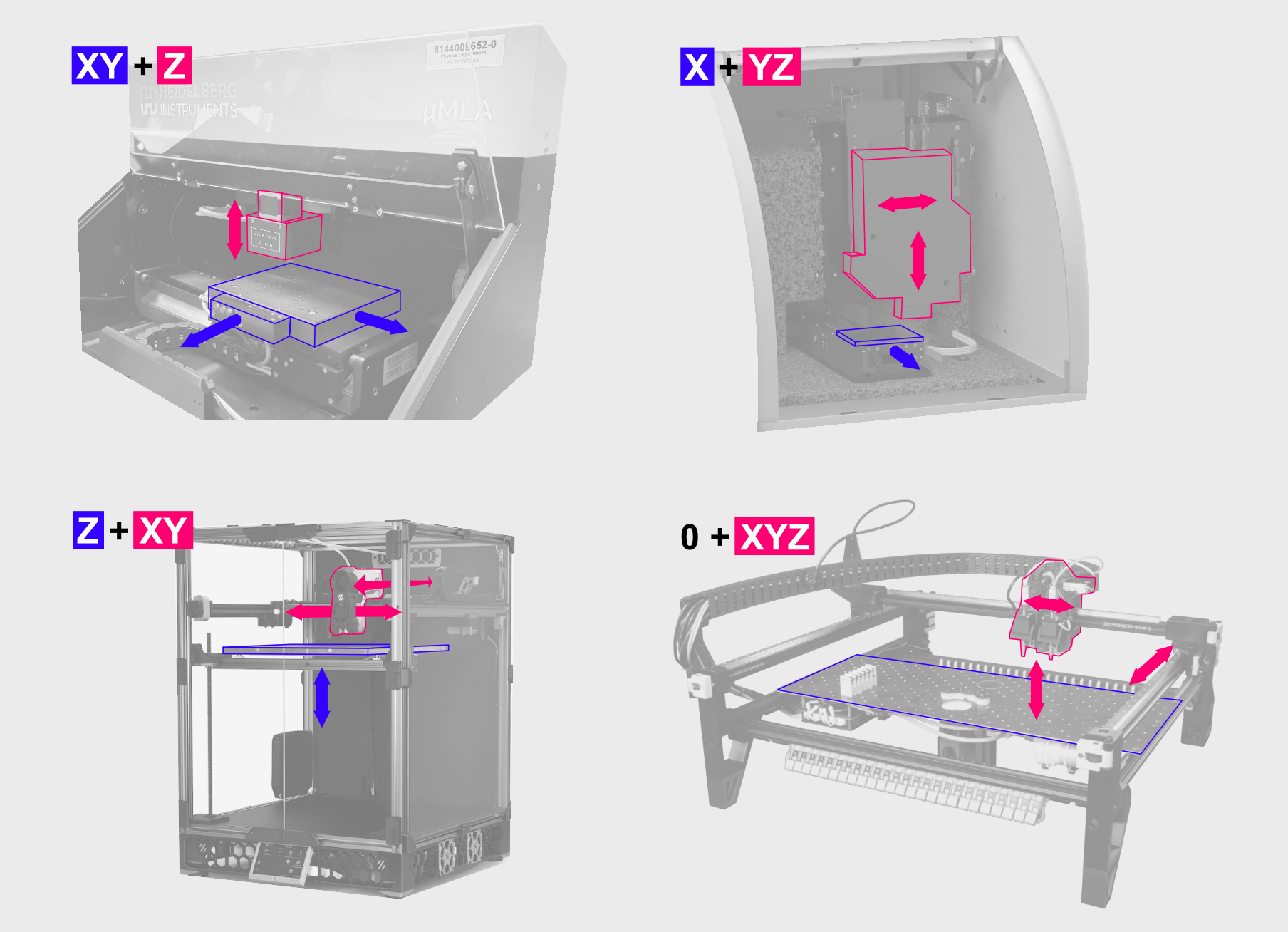-
Notifications
You must be signed in to change notification settings - Fork 0
motion systems
Just like in the case of 3D printers, where there are multiple viable motion system layouts (e.g. "bedslinger" and "Core-XY"), there are a few different possible arrangements for the components for a lithography system. I will discuss them below and by the end you should understand why Medjed uses one specific configuration.
A photolithography system has two parts that (may) move: the sample chuck and the optics. Let's consider 4 arrangements below taken from either existing lithography systems or from other open source projects.

In the X+YZ arrangement the sample chuck only moves along one axis, while the optics move along Y and also move in Z to focus on the sample. This arrangement is used in the Picomaster MLA systems by Raith. The advantage is that you don't have to stack linear motion systems on top of each other as in the XY+Z arrangement. Since these precision motion systems are heavy and expensive, it means higher load capacity motion stages are needed. Since the optics need to be held in place anyway with some rigid system, adding heavy axis there is not a big concern. It does, however, add more vibrations to the optical system. By making the X axis the primary axis for stepping motion, the Y axis (moving the optics) only has to step every so often (every line) and jerk can be minimised.
In the XY+Z arrangement, the sample chuck moves in XY, while the optical assembly is only adjusted in Z. This is used by Heidelberg in the µMLA system. As mentioned above, it means the First axis of motion will have to carry not only the chuck but also the other linear axis. On the upside, the the optics only have to move in Z. For small adjustments this can be achieved by only moving the objective. Then the other parts in the optical assembly remain fully stationary, which should help with keeping alignment. It has another advantage for special cases, discussed in the next paragraph.
The Z+XY system, more commonly known as "core-XY" in the 3D-printing world (e.g. in the Voron Trident printer), would translate to a sample stage that only moves in Z while the optics move in XY. This arrangement works well for 3D-printers, because the extruder + hotend can be kept quite light and do not need very fine alignments. In a lithography system, the optical assembly can get quite heavy, as lenses are heavy and rigid assemblies to keep everything aligned are also heavy. Still, it is not fundamentally unviable, but it would probably only work with significant effort to reduce weight or with plastic optics.
The 0+XYZ System of the lumenPnP system has the same problem as the Z+XY configuration, but now the entire optical assembly also needs to move in Z. This makes achieving the required rigidity even more challenging. It makes sense for the lumenPnP project, where the sample chuck is quite large and the pickup unit quite small and light.
Summary
The best motion systems for MLA systems are different from those in other systems (e.g. 3D printers), because the optical unit cannot/should not move very fast in XY as this creates stability and alignment issues. You can have the sample stage either move only in Y, letting the stage do the fast steps, and the X axis (with optics) do the slow, rare steps in X, or do both the fast Y and slow X steps on the stage and have the optics remain stationary (except for focussing).